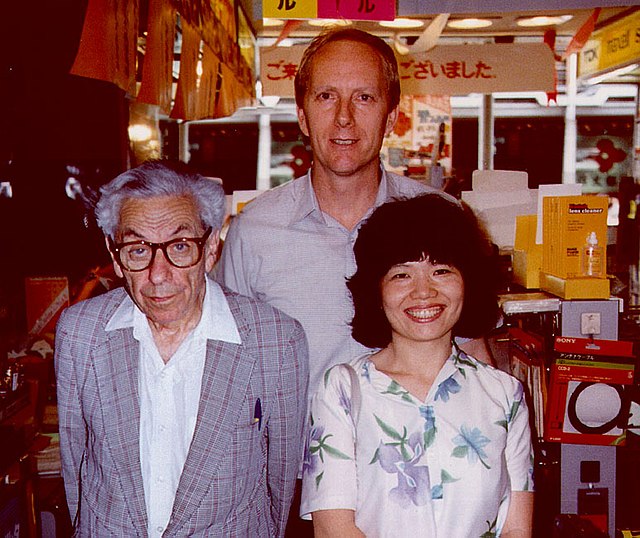The Erdős number describes the "collaborative distance" between mathematician Paul Erdős and another person, as measured by authorship of mathematical papers. The same principle has been applied in other fields where a particular individual has collaborated with a large and broad number of peers.
Paul Erdős in 1992
Paul Erdős in 1985 at the University of Adelaide teaching Terence Tao, who was then 10 years old. Tao became a math professor at UCLA, received the Fields Medal in 2006, and was elected a Fellow of the Royal Society in 2007. His Erdős number is 2.
Paul Erdős was a Hungarian mathematician. He was one of the most prolific mathematicians and producers of mathematical conjectures of the 20th century. Erdős pursued and proposed problems in discrete mathematics, graph theory, number theory, mathematical analysis, approximation theory, set theory, and probability theory. Much of his work centered around discrete mathematics, cracking many previously unsolved problems in the field. He championed and contributed to Ramsey theory, which studies the conditions in which order necessarily appears. Overall, his work leaned towards solving previously open problems, rather than developing or exploring new areas of mathematics.
Paul Erdős in 1992
Counter-clockwise from left: Erdős, Fan Chung, and her husband Ronald Graham, Japan 1986
Erdős influenced many young mathematicians. In this 1985 photo taken at the University of Adelaide, Erdős explains a problem to Terence Tao—who was 10 years old at the time. Tao received the Fields Medal in 2006, and was elected a Fellow of the Royal Society in 2007.
Grave of Erdős, Kozma Street Cemetery, Budapest





